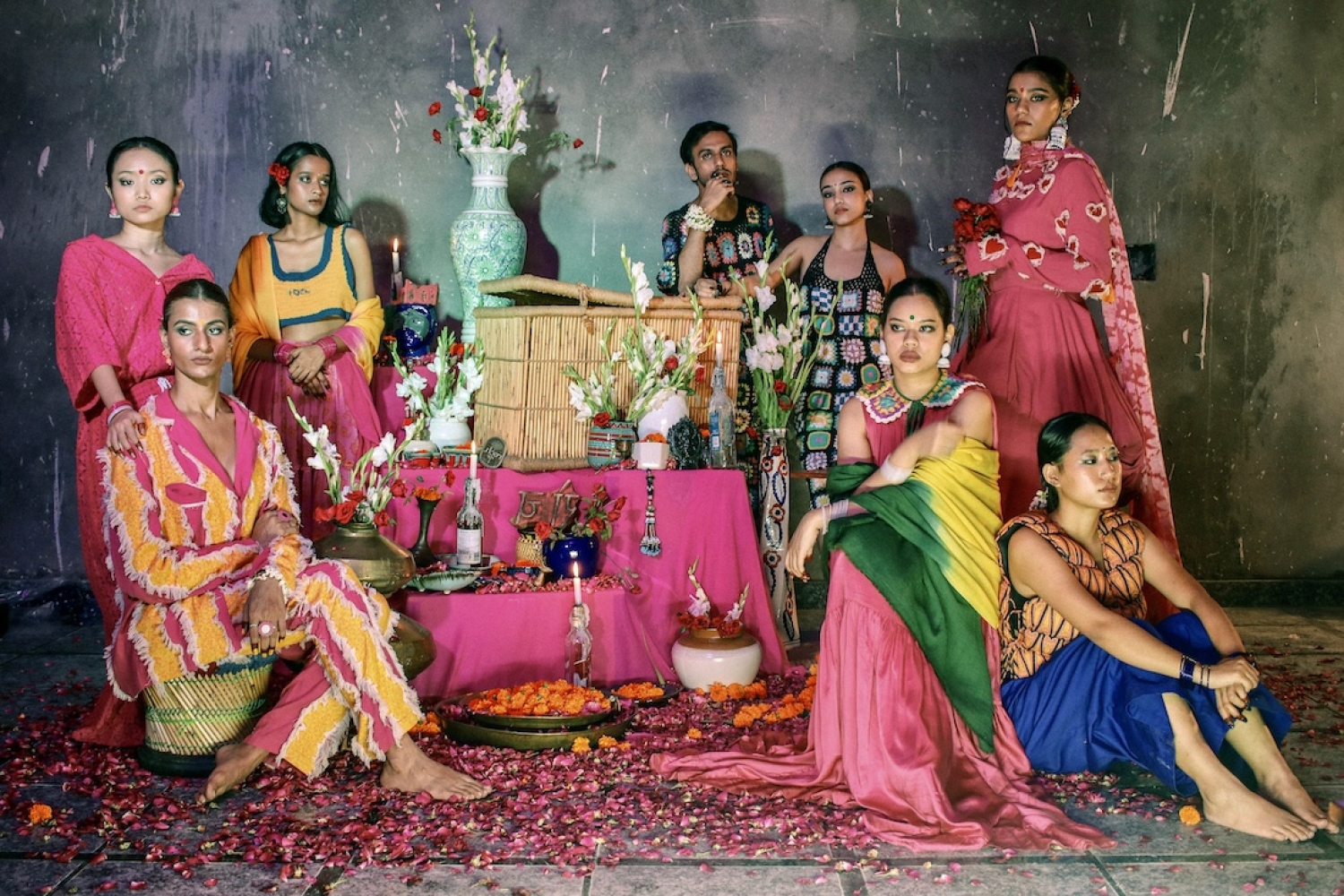

Ronak Choudhary, founder of the label Roch Studio, grew up surrounded by strong women and observing their traits. He confidently gives credit to the person he is today, unapologetically emotional and enthusiastic, to the women he met in his early years. He vividly recalls the day when he decided to foray into the world of fashion as well. Growing up with a head full of culinary dreams, Ronak was sitting and drawing illustrations when his mother, a NIFT alumni, pushed him towards design. He tells me how it was that one switch that helped him make the choice and move towards something he enjoyed thoroughly as well. We’re in conversation with the designer about his practice, collections, and more.
The Practice
When I think of designing, what comes within is that sense of belongingness. What I’m hinting at also is the deep rooted nostalgia of Indian culture. This means one has to keep up by exploring newer methods, techniques and surfaces to incorporate Indian culture in the current global context. My main motive, when it comes to designing, is that the wearer is able to feel something in the garment. If I had to talk about the core values, they would include circularity, nostalgia and ethics. My intent is to bring everyone’s inner child out and let it roam free on the streets wearing Roch Studio.
There are not a lot of maximalist statements that people keep, but everybody may own a white shirt and a black trouser in their closet. I’m just attempting to reinvent what we think of as staples. We want to reinvent these staples but also make sure that we’re producing our clothes as sustainably as possible. Just the thought of sustainability always brings one towards a minimal front, but when you’re thinking of maximalism, you think of it being extravagant or pompous. We make sure to use fabrics that are locally sourced and also involve as many artisans as possible for the handwork. I make sure to compensate them beyond the “market standard” because I don’t want anybody to feel deprived of anything. I want everybody to essentially grow with us.

The Process
When it comes to my creative process, I usually sit about six to seven months before the season. I like to research upon history in a rather generic manner, be it the Vietnam war, the French or the Russian revolutions. If we talk about the previous spring summer collection we did, we worked with the idea of fête champêtre — these garden parties that used to take place in the 1800s in Versailles. We contemporised the idea of fête for a utopian 21st century, where everybody belongs everywhere and isn’t bound by societal norms. For this collection, I wanted every single detail to have a link to the narrative we were trying to establish.
We did a bageecha dress constructed out of organic cotton cambric with organic cotton voile lining. This dress represents the sky, the sleeves represent the gardens, and the elongated collars represent the distance between the garden and the sky and how they can never meet. But one looks at the horizon and wonders that there has to be a point where they do. While we look at fête in the form of freedom, back then it was merely white people having parties with no intrusion at all.
For the autumn winter collection, we worked with the term mehfil — how one’s thoughts go back to a king sitting surrounded by courtsmen, with a woman usually performing. Subverting that idea we’ve taken a female protagonist, and instead of people performing, we’ve gone through the queen’s personality and characteristics and made them the star of the show. So we essentially go through the story and make a lineup of characters and characteristics we can get out of it. We come up with about thirty ensembles and then narrow it down to ten or fifteen, that is where I draw the line as to how many pieces we’d like to produce.
The Fashion of Now
I feel it needs to be more inclusive in a manner that isn’t tokenistic. Hiring a plus size model and then not even catering to a size sixteen at the stores is something that is absolutely absurd to me. It’s not just about being a different size, but also about different orientations. Some designers do get confused about gender norms and neutrality. I think work needs to be done on ground zero to turn things into reality rather than pretending to be inclusive. It should mean more than being just a business.
Words Unnati Saini
Date 13-02-2023